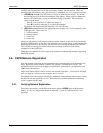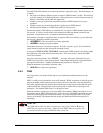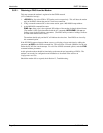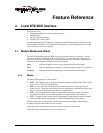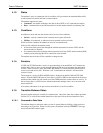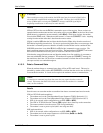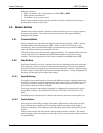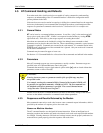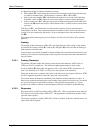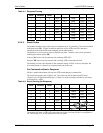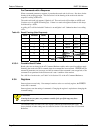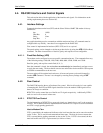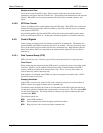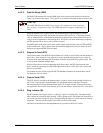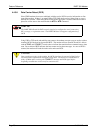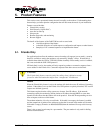
Feature Reference DART 300 Modem
Page 22 2110212 Rev 1.0
As shipped the modem is configured with these settings:
• Echo enabled (E1): which causes the modem to echo characters received from the host back
to it while in command state. The backspace is echoed as <BS> <SP> <BS>.
• Quiet result codes disabled (Q0): which enables the modem to issue result codes following
commands. Quiet on (Q1) suppresses result codes entirely; responses remain unaffected.
• Verbose result codes (V1): which provides results in English text appended with <CR><LF>.
Verbose off (V0) returns the results as ASCII numeral codes. Numeric codes are much easier
to process.
With Echo on (E1 – the default) data received from the local host while in command state is
echoed back to the host. This can present problems to machine control, which is not interested in
an echo of its own commands to the modem. In most configurations the echo should be turned
off (E0).
The configuration for the target host is more likely to set Echo off, and Verbose off or possibly
Quiet on.
Framing
The framing of these elements by <CR><LF> will depend heavily on the settings of the modem.
In particular the settings of Echo (E), Verbose (V), and Quiet (Q) modes will alter the framing of
both responses and result codes.
These elements are normally formatted for human reading with a terminal program, however users
wishing to have software read and adjust to these responses and result codes must understand how
they are framed.
4.3.3.1. Framing Characters
The modem will frame replies with carriage return and line feed characters: ASCII values 13
<CR> and 10 <LF> respectively. The modem does not support changes to these values.
If echo is enabled (E1) the modem will append a <LF> to the echoed <CR> from the host. If
echo is off, then there is no <CR> or <LF> prior to the response to the command.
Where the modem issues a response (data) prior to the result code, the response will have a <CR>
and <LF> appended regardless of the echo, quiet, and verbose settings.
The sections below on Responses and Result Codes detail the framing characters to expect. If
there are any problems determining the exact framing of the response and result codes, you should
use a protocol analyzer to monitor the exchanges. For application development, it is a good
practice to have either a software or hardware protocol analyzer available for troubleshooting.
4.3.3.2. Responses
Responses will be in ASCII text with a trailing <CR><LF>. Where a response has more than one
line, each line is terminated with a <CR><LF>. The programmer must know the number of lines
expected in the response.
The responses will have a leading <CR><LF> if Echo is enabled. With echo disabled, there is no
prefix to the ASCII response.



